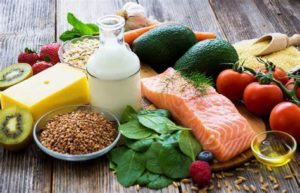
Until recently, organic produce was found mainly in home gardens, quaint farmers’ markets and specialty health food stores. Over the past few years, however, the heightened eco-consciousness of the green movement and health concerns about chemicals used in conventional farming have led to consumer demand for fruits and vegetables grown without synthetic pesticides, artificial fertilizers, irradiation or biotechnology, making organic the fastest growing sector in the food marketplace.
In addition, research is beginning to support the contention that chemicals used in conventional farming can have a negative impact on health. The 2008-2009 annual report from the President’s Cancer Panel, “Reducing Environmental Cancer Risk: What We Can Do Now,” published in April 2010, encourages consumers to choose organically grown food to help decrease their exposure to environmental toxins, stating in their recommendations, “Give preference to food grown without pesticides, chemical fertilizers and growth hormones.”
Despite being more widely available, the cost of organic produce can be as much as 40 percent higher than conventionally grown crops, placing it out of reach for many consumers. The good news is that choosing organic foods to improve your health doesn’t have to be an all-or-nothing proposition. The Environmental Working Group (EWG) publishes an annual Shoppers Guide to Pesticides based on lab tests conducted by the USDA Pesticide Data Program. According to the EWG, you can lower your pesticide consumption by nearly 80 percent by avoiding the 12 most contaminated conventionally grown fruits and vegetables and instead eating the least contaminated produce. When you eat fresh produce from the “Clean 15” (the least contaminated fruits and vegetables), you’ll be exposed to fewer than 2 pesticides per day, compared to as many as 67 pesticides per serving found in the “Dirty Dozen.”
The Dirty Dozen (always buy organic)
Celery (most contaminated)
Peaches Strawberries Apples
Blueberries Nectarines Bell peppers
Spinach Kale Cherries
Potatoes Grapes (imported)
The Clean 15
Onions (least contaminated)
Avocados Sweet corn Honeydew melon
Pineapples Mangos Sweet peas
Asparagus Kiwi Eggplant
Cantaloupe Watermelon Grapefruit
Cabbage Sweet potatoes
Have a great weekend!
Laura Goguet
Community Manager